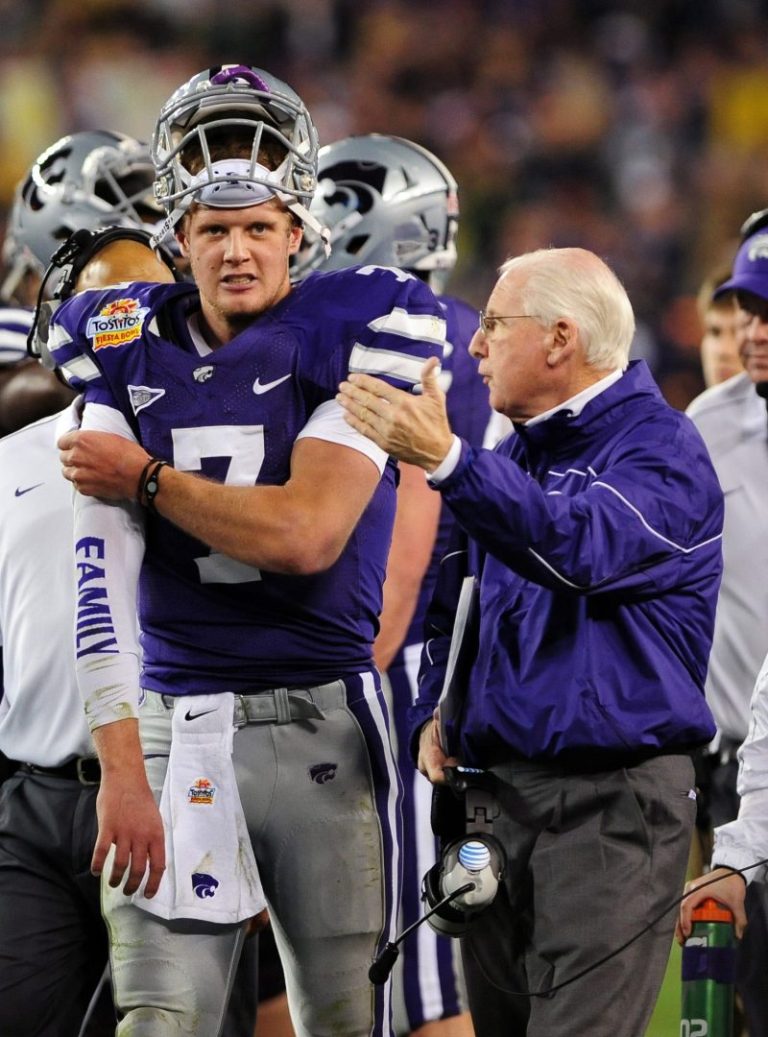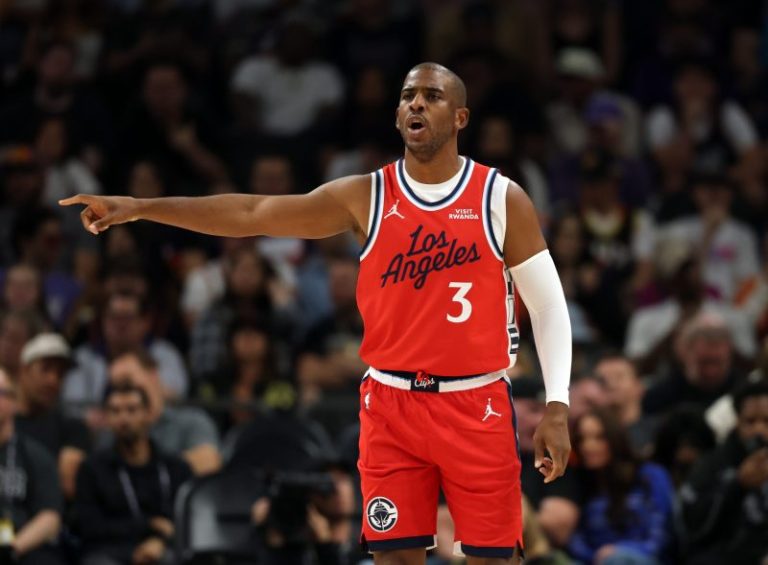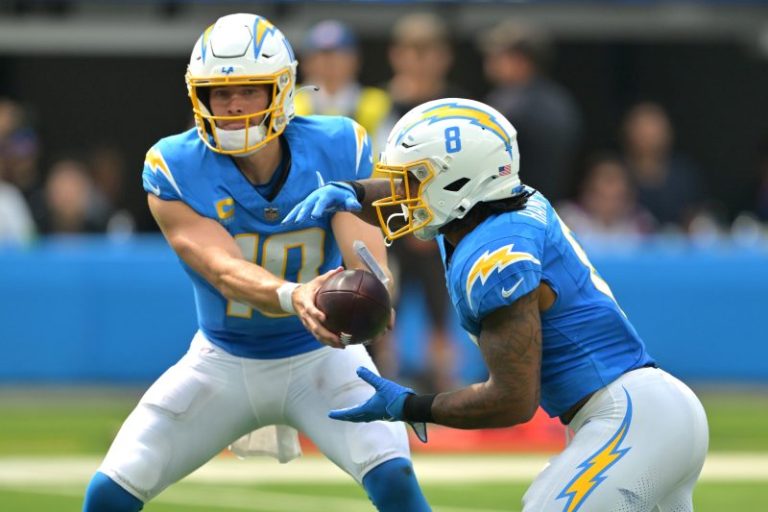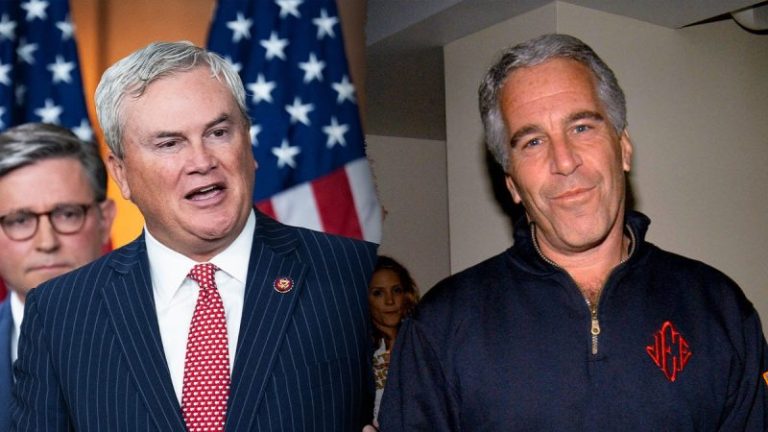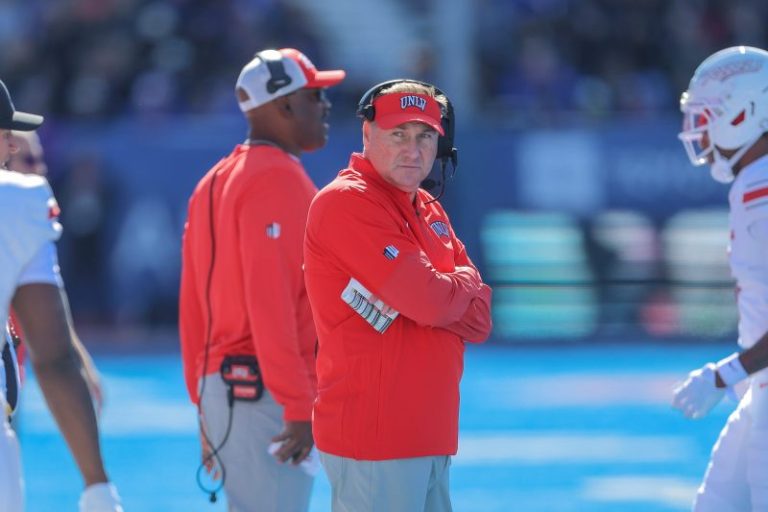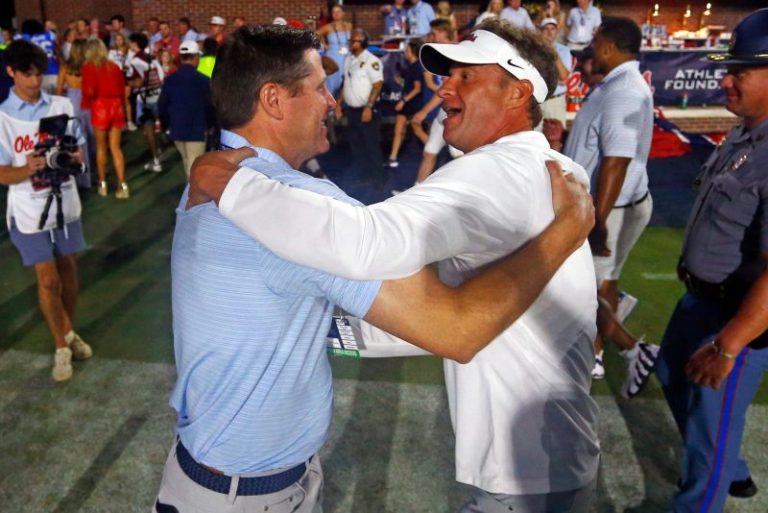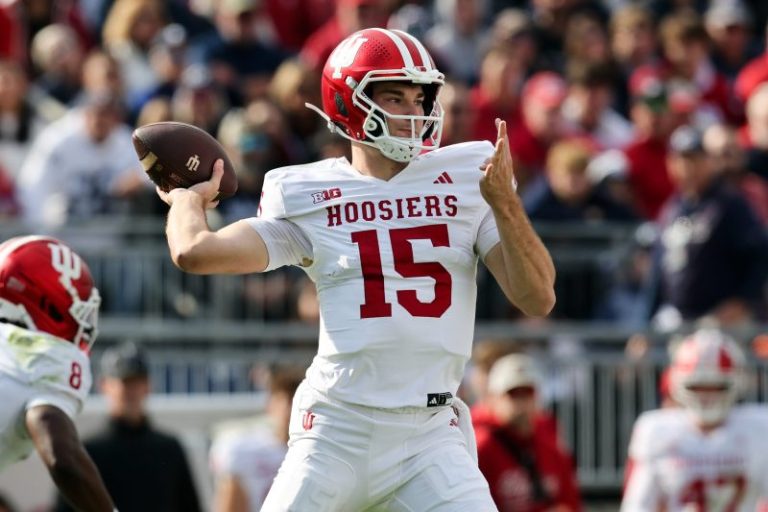Our latest 2026 NFL mock draft takes a look at how the first round could pan out if QBs Dante Moore and Ty Simpson don’t declare.
In that scenario, Indiana’s Fernando Mendoza might be the only signal-caller to be selected on Day 1.
Several defensive players could be pushed into the top five if there’s a QB shortage.
With more than a month left until the first round order is set and the underclassman declaration deadline passes, any 2026 NFL mock draft compiled in December typically will skew closer to a thought experiment rather than a full-on projection.
That means that there’s no better time to reconsider the most popular schools of thought surrounding the draft. While most of these early exercises have counted on quarterbacks Dante Moore (of Oregon) and Ty Simpson (Alabama) to declare, what happens if neither one joins the fray for next April’s event? Each passer is short on the experience that NFL teams traditionally value from signal-callers, and either could opt to return to school and position himself to be a top choice in 2027.
That, of course, might throw the upcoming draft for a loop. There are few assurances at quarterback in the coming class, with Indiana’s Fernando Mendoza – a junior who has little reason to stick around after becoming the front-runner to be the first passer selected – the lone player at the position who looks to be on somewhat solid ground. And if both Moore and Simpson stay back, that could leave teams to look elsewhere this offseason to fill voids behind center.
With that in mind, here’s our latest mock draft that outlines how the first round could pan out if Moore and Simpson don’t declare:
2026 NFL mock draft
1. Tennessee Titans – Arvell Reese, DE/LB, Ohio State
In a class lacking a consensus top prospect, Reese has as strong a case as anyone to be the No. 1 pick. No defensive player can match his ceiling, and the best chance for him to reach it might entail a move from linebacker to full-time edge rusher. The 6-4, 243-pounder has stretches where he looks unstoppable when working downhill, as he can easily toss aside would-be blockers before closing in on quarterbacks and ball carriers. Tennessee’s defense can pick up a foundational piece to operate alongside Jeffery Simmons before using the rest of the draft to focus on the effort to support Cam Ward.
2. New York Giants – Caleb Downs, S, Ohio State
The odds of a safety being selected this high are vanishingly small. But Downs might test the bounds of his position given how valuable he can be as a do-everything defender, and the Giants don’t have many compelling alternatives here. With New York’s defense short on leadership and figures who can stand up to repair the league’s worst run defense, Downs can come in and lead the charge on both fronts.
3. New Orleans Saints – Rueben Bain Jr., DE, Miami (Fla.)
Can the Saints muster enough faith in 2025 second-round pick Tyler Shough to stave off another quarterback pick? A half-season might not yield a sufficient sample size to render a judgment, but the early returns have been largely promising. Edge rusher might not be the biggest hole on a roster littered with them, but Bain has entrenched himself as the most consistently disruptive figure in this class with his persistent pressure.
4. Las Vegas Raiders – Keldric Faulk, DE, Auburn
The quarterback siren song will be strong for Las Vegas, which yet again looks directionless despite an expansive offseason reset. But the Raiders can’t expect a young signal-caller to thrive in the same conditions that have fazed Geno Smith, so any attempt at fast-tracking a turnaround might need to begin in the trenches. Without an offensive lineman worthy of this slot, the Raiders maximize their value with Faulk, who could help ease the burden on Maxx Crosby while simultaneously learning some all-important pass-rushing tips from the four-time Pro Bowl selection.
5. Cleveland Browns – Fernando Mendoza, QB, Indiana
Shedeur Sanders’ turn steering an unmoored Browns offense says next to nothing about the team’s plans for 2026, and it’s unlikely that anything will change in the final five weeks. Armed with two first-round picks, Cleveland has the flexibility to maneuver for a quarterback, but instead finds a suitable new signal-caller here in Mendoza. The composed, rhythmic passer sizes up as the kind of discerning and precise triggerman that Kevin Stefanski would covet behind center.
6. Washington Commanders – Carnell Tate, WR, Ohio State
There’s little left to be done for Washington in a lost season other than try to glean a few insights that could prove helpful in returning the team to the contender ranks in 2026. One takeaway that’s already impossible to ignore is that Jayden Daniels’ receiving corps is in dire need of upgrading. The Commanders can double down on talented former Buckeye wideouts by taking the ascendant Tate to pair with Terry McLaurin to give the offense two imposing perimeter threats.
7. New York Jets – Jordyn Tyson, WR, Arizona State
One of the potential losers in a scenario in which the quarterback crop thins considerably would be the Jets, who might find themselves further back in the draft order than many expected after their 0-7 start. While Gang Green would have ample ammo to move up for someone like Mendoza, the team could also choose to stay put and take a different route to assist the offense. Tyson has continued to be plagued by injury this season, but he’s a dynamic playmaker at all three levels when healthy.
8. Arizona Cardinals – Jeremiyah Love, RB, Notre Dame
Maybe a top-10 running back is a luxury for a team that has as many deficiencies as Arizona, which could also be facing a changing of the guard at quarterback if it opts to move Kyler Murray in the offseason. But the Cardinals can’t pass up the opportunity to reshape their backfield with a singular talent, especially with with James Conner coming off a season-ending ankle injury and entering the final year of his deal. Love is the kind of figure capable of reconfiguring the offense with his explosiveness, and he can either elevate the existing setup or carry a new group.
9. Los Angeles Rams (from Atlanta Falcons) – Spencer Fano, OT, Utah
What’s better than being in contention for home-field advantage throughout the playoffs? Having a potential top-10 pick waiting for you whenever the postseason run comes to an end. The Rams are poised to cash in on the Falcons’ lack of foresight in April’s first-round trade, and their prize could be Fano, a leading candidate for the top offensive tackle in this class and a blocker whose athleticism would make him a natural fit for Sean McVay’s scheme.
10. Cincinnati Bengals – Francis Mauigoa, G/T, Miami (Fla.)
A decrepit defense that has shown some late signs of life still warrants a major investment in the draft, but the top prospects are spoken for in this scenario. Instead, Cincinnati turns to the stout Mauigoa, who could move to guard and boost the Bengals’ interior protection to levels that Joe Burrow hasn’t previously enjoyed.
11. Minnesota Vikings – Jermod McCoy, CB, Tennessee
The offensive cratering that has coincided with the pivot to J.J. McCarthy can’t be repaired in a single pick, with a more holistic approach likely necessary for Minnesota’s offseason. Though McCoy’s stock could be in flux after he missed the entire season with a torn anterior cruciate ligament suffered in January, he still has a strong argument to be the top player selected at his position if teams are satisfied with his pre-draft medical checks.
12. Miami Dolphins – Mansoor Delane, CB, LSU
With Chris Grier out and Mike McDaniel’s fate still unknown, there’s still plenty for Miami to sort out before a sensible offseason path for the franchise emerges. No matter what happens in the next month or so, the longstanding problems at cornerback require some kind of solution. Delane’s pedestrian physical attributes might prevent him from landing in the top half of the first round, but his coverage skills and acumen are everything a team could ask of a top cornerback.
13. Kansas City Chiefs – Peter Woods, DT, Clemson
A typical Chiefs season would leave the team out of position to land the type of defensive linemen who could provide the kind of pass-rush help that the defense sorely needs. But this is no ordinary campaign for Kansas City, and franchise leadership might find itself in a spot where it can actually make a splash with the front four. Woods hasn’t met expectations on the field to cement his preseason standing as a potential top-five pick, but he’d be a bargain here as someone who could hone his craft next to Chris Jones to become a more consistently disruptive force.
14. Pittsburgh Steelers – Makai Lemon, WR, USC
The modestly built Biletnikoff Award finalist isn’t what many would picture as the receiver Pittsburgh is seeking to invigorate the dormant downfield passing attack. But Lemon can still open the offense up by racking up yards after the catch and thriving in the short-to-intermediate area.
15. Carolina Panthers – Kenyon Sadiq, TE, Oregon
Two first-round pass catchers in successive drafts have produced wildly disparate results for Carolina, but an offense that has shown promise still looks short on difference-makers. Sadiq can create mismatches in the passing game while also aiding the rushing attack with his punishing blows as a blocker.
16. Dallas Cowboys – David Bailey, OLB, Texas Tech
Quinnen Williams’ arrival and the deployment of five-man fronts have unlocked new capabilities for Dallas’ defense. But there’s more work to be done to remake this unit and allow the Cowboys to move on from the Micah Parsons saga. Bailey will have to be utilized creatively given his 6-3, 250-pound frame, but the Football Bowl Subdivision leader in sacks (12 ½) would provide an unmatched jolt to the edge rush.
17. Detroit Lions – T.J. Parker, DE, Clemson
Defensive coordinator Kelvin Sheppard openly acknowledged Monday that the Lions aren’t doing nearly enough to throw opposing quarterbacks out of rhythm. With three sacks against South Carolina, Parker is starting to serve up reminders of his first-round toolkit. A well-rounded approach that includes an admirable approach against the run should help him catch the eye of Brad Holmes and Dan Campbell as the long-sought running mate for Aidan Hutchinson.
18. Houston Texans – Olaivavega Ioane, G, Penn State
A workable starting front for Houston has finally emerged after plenty of tinkering throughout the early season. That shouldn’t prevent the team from continuing to address its peskiest problem, however, and Ioane’s reliability in both limiting interior pressure and creating a push in the run game should be a major draw for the Texans.
19. Baltimore Ravens – Kayden McDonald, DT, Ohio State
The Ravens’ resurgence can’t obscure the defensive line’s shortcomings with Nnamdi Madubuike sidelined. McDonald should have no trouble helping Baltimore better command the line of scrimmage with his 6-3, 330-pound frame, which he can also use to push the pocket.
20. Tampa Bay Buccaneers – CJ Allen, LB, Georgia
The Buccaneers’ defense showed concerning signs coming out of the bye, with the team surrendering 106 points over a three-game losing skid. Allen can help the unit chart a new course with his consistency, particularly in coverage for a linebacker group that has seldom been up to the task in that area this season.
21. Buffalo Bills – Denzel Boston, WR, Washington
Josh Allen sure could use a 6-4, 210-pound target with a knack for securing deep heaves downfield. If the Bills have been properly humbled about the composition of their receiving corps, they should find Boston plenty alluring, so long as they end up within striking distance of him in the draft.
22. Philadelphia Eagles – Avieon Terrell, CB, Clemson
Last year’s incredible draft haul should have solved things in Philadelphia’s secondary for some time, but the second outside cornerback spot has remained a problem area. Terrell can lock down the role with savvy yet aggressive play that makes him well-suited for Vic Fangio’s scheme.
23. Jets (from Indianapolis Colts) – Brandon Cisse, CB, South Carolina
Moving on from Sauce Gardner won’t be easy for the Jets’ secondary, but Gang Green now has a blank slate and plenty of resources to build up on the back end. Cisse is a strong candidate to rise throughout the pre-draft process thanks to his superlative athleticism, and his tenacity could make him a fast favorite of Aaron Glenn.
24. San Francisco 49ers – Kadyn Proctor, OT, Alabama
Regardless of whether Trent Williams plays beyond this season, it’s time for San Francisco to start enacting a succession plan at left tackle. Proctor’s inconsistency and truly unique physical make-up (6-7, 366 pounds) could leave him with a wider range of draft outcomes than many of his peers in the first-round mix, but Kyle Shanahan and the 49ers might present the right setting for him to flourish as a pro.
25. Los Angeles Chargers – A’Mauri Washington, DT, Oregon
Getting trampled by the Jaguars for nearly 200 yards and four touchdowns on the ground should stick with Jim Harbaugh for a while given how the Chargers haven’t been able to play his desired brand of football this season. Stopping the ground game before it gets going is one of Washington’s specialties, and one that should land him in the late portion of the first round.
26. Browns (from Jacksonville Jaguars) – Caleb Lomu, OT, Utah
Whoever takes the starting reins for the Browns at quarterback in 2026 will likely need next year’s rookie class for Cleveland to find a comparable level of success to this year’s impressive crew. Lomu figures to be more of a long-term project, but the fleet-footed redshirt sophomore has exciting upside the Browns could tap into if they’re patient enough to bring him along.
27. Cowboys (from Green Bay Packers) – Emmanuel McNeil-Warren, S, Toledo
He won’t receive the same pre-draft spotlight as former Toledo teammate Quinyon Mitchell, but keep an eye on McNeil-Warren as someone who could be a surprise on Day 1. His comfort in handling an expansive coverage range would make him a natural fit in Dallas, though he also has the size and versatility to work downhill and handle an array of matchups.
28. Seattle Seahawks – Emmanuel Pregnon, G, Oregon
Things have gotten considerably more difficult in recent weeks for the Seahawks’ explosive offense, with much of the trouble once again tracing back to the front. Pregnon’s power could allow Seattle to embody something closer to Mike Macdonald’s vision of a hard-charging run-powered attack.
29. Rams – Colton Hood, CB, Tennessee
The ideal scenario for the Rams and their well-stocked roster would be to find another team eager to move into the back end of the first round here for a disproportionate price. If Los Angeles holds onto the second of its two Day 1 selections, however, it could find a solid asset for its up-and-down secondary in Hood, who would stand out in the right ways with his ability to hold up against bigger receivers.
30. Denver Broncos – Sonny Styles, LB, Ohio State
Solidifying the second level might be one of the few tasks remaining for a defense that looks poised to be one of the league’s dominant units for years to come. At 6-4 and 243 pounds, Styles would give coordinator Vance Joseph another formidable threat on blitzes, though the former safety’s best work might come in coverage and in chasing down ball carriers.
31. Chicago Bears – Quincy Rhodes Jr., DE, Arkansas
When Chicago’s defense hasn’t been able to generate takeaways, it often can only go as far as its pass rush can take it – and that’s not a great distance. Rhodes offers inside-outside versatility with his 6-6, 275-pound frame and substantial strength, and his game could take off with additional refinement.
32. New England Patriots – Cashius Howell, OLB, Texas A&M
The Patriots cobbled together an edge rush with Harold Landry III and K’Lavon Chaisson, and they somehow have notched 14 sacks between the two castoffs. To hang with the best in the AFC, however, more firepower will be required. Howell doesn’t have the physical make-up of a first-round pass rusher, but his process and results (11 ½ sacks) are hard to argue with.
This post appeared first on USA TODAY

